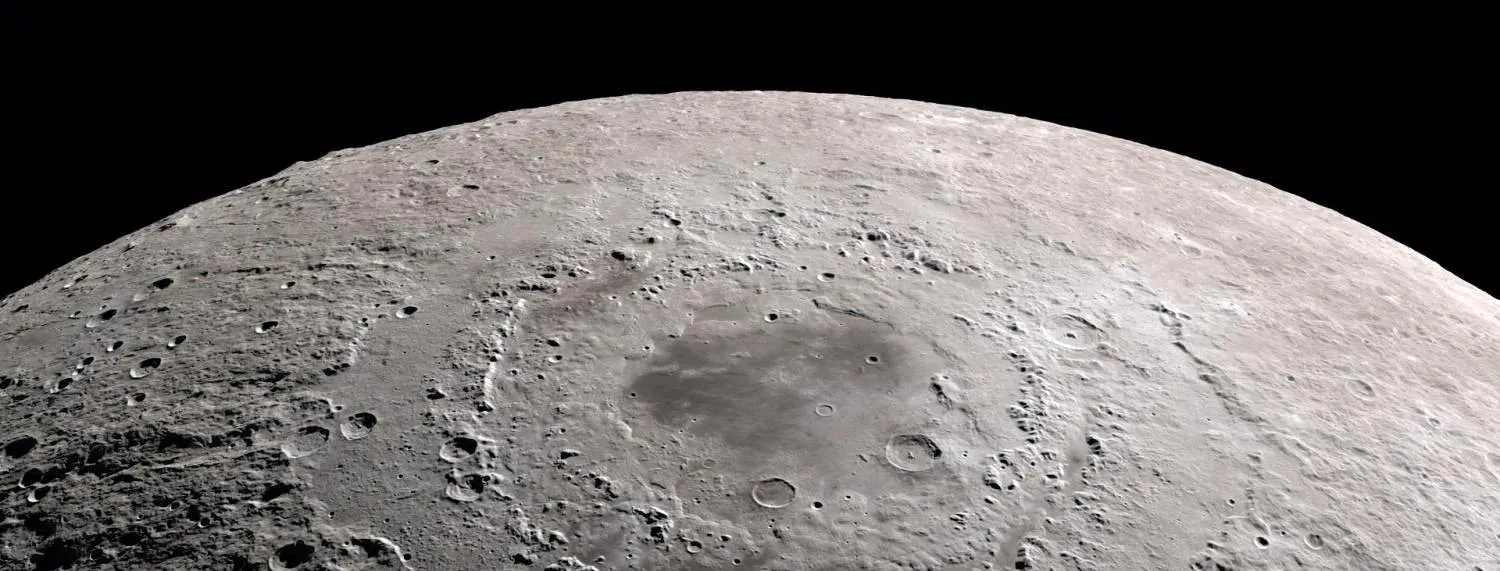Billions of years ago, a series of volcanic eruptions raged on the moon, covering hundreds of thousands of square miles of the moon's surface with hot lava. Over a long period of time, these lava formed dark spots, giving today's lunar surface a unique appearance* A new study by the University of Colorado at Cu boulder shows that volcanoes may have left another lasting impact on the lunar surface: the ice layers dotted at the moon's poles * may be tens or even hundreds of feet thick in some places.

Andrew wilcoski, the lead author of the new study and a graduate student of the Cu boulder Department of Astrophysics and Planetary Science (APS) and the atmospheric and Space Physics Laboratory (LASP), said: "we envision it as ice on the moon that forms over time."
He and his colleagues published their findings this month in the journal planetary science.
With the help of computer simulation (or model), researchers try to reproduce the conditions on the moon long before the emergence of complex life on earth. They found that ancient lunar volcanoes spewed large amounts of water vapor, which then settled on the earth's surface, forming ice deposits that may still be hidden in the lunar crater. If there were humans alive at that time, they might even see a trace of ice at the junction of day and night on the surface of the moon.

Paul Hayne, co-author of the study, said that this is a potential reward for future lunar explorers who need water to drink and process into rocket fuel.
Hayne, associate professor of APS and LASP, said: "it is possible that you have a large amount of ice 5 or 10 meters below the surface."
The new study adds to growing evidence that the moon may have much more water than scientists once thought. In a 2020 study, Hayne and his colleagues estimated that nearly 6000 square miles of the lunar surface might be trapped and hung with ice, mainly at the moon's north and south poles. Where all this water first came from is not clear.
"There are many potential sources," Hayne said Volcanoes may be a big source. The planetary scientist explained that from two to four billion years ago, the moon was a chaotic place. During this period, tens of thousands of volcanoes erupted on its surface, producing huge lava rivers and lakes, which are different from the features you may see in Hawaii today, but more huge.
"They dwarf almost all eruptions on earth," Hayne said

Recent research by scientists at the Houston Institute of moon and planets suggests that these volcanoes may also have spewed towering clouds, mainly composed of carbon monoxide and water vapor. These clouds then revolve around the moon, potentially forming a thin and ephemeral atmosphere.
This makes Hayne and wilcoski wonder whether the same atmosphere will leave ice on the surface of the moon, a bit like the ice formed on the ground after a cold autumn night?
In order to find out, the two, together with Margaret Landis, research assistant of LASP, began to try to put themselves on the surface of the moon billions of years ago.
The team used an estimate that there would be an average volcanic eruption every 22000 years at the peak of the moon. The researchers then tracked how the volcanic gas rotated around the moon and escaped into space over time. They found that the situation may have become cold. According to the team's estimates, about 41 percent of the water from the volcano may have condensed into ice on the moon.
"The atmosphere escapes in about 1000 years, so there is enough time to form ice," wilcoski said
In fact, there may be so much ice on the moon. As you can imagine, you can find the luster of frost and thick polar ice caps from the earth. The team calculated that about 18 trillion pounds of volcanic water might have condensed into ice at that time. This is more water than is currently in Lake Michigan. And the study suggests that most lunar water may still exist today.
However, these pieces of space ice may not be easy to find. Most of the ice may have accumulated near the moon's poles and may be buried under a few feet of lunar soil.
Hayne says this is another reason for people or robots to go back and start digging. "We really need to go deep and look for it," he said